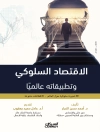This book provides a much-needed review of Asia’s economic growth and its challenges in the context of post-war industrialization. In the early 1990s, the World Bank (1993) recognized eight high-performing Asian economies (HPAEs) (Japan, the Asian tigers, Indonesia, Malaysia and Thailand) and named them the ‘Asian economic miracle’. In the recent past, the term ‘emerging economies’ has been widely used to refer to the high-growth economies, and includes China, India, Mongolia and Vietnam. In this rush towards high growth, the adverse effects of industrialization are widespread, but were unnoticed. The major challenge is to bring together a comprehensive picture of Asia’s growth, taking into account the adverse consequences. Finally, this book examines two challenges for the future of Asia’s development: the global financial crisis and urban poverty and inequality.
表中的内容
1. Inward Orientation as a developmental strategy.- 2. Outward Orientation as an alternative strategy for development.- 3. Japan and the Asian Tigers.- 4. Regional Trade Agreements (RTA) and the Association of South East Asian Nations (ASEAN).- 5.China: an emerging giant.- 6.India’s growth path.- 7.Asian to global crisis.- 8.Poverty and Urbanization in Asia.
关于作者
Kankesu Jayanthakumaran is Senior Lecturer in Economics at the University of Wollongong. His research addresses knowledge and statistical gaps in relation to trade integration, industrial growth, poverty reduction, and sustainable environment.












